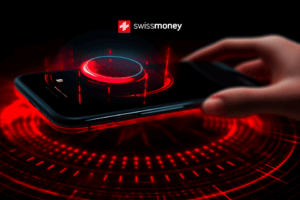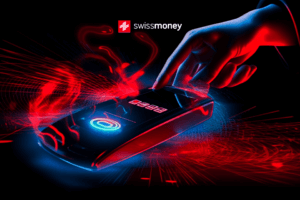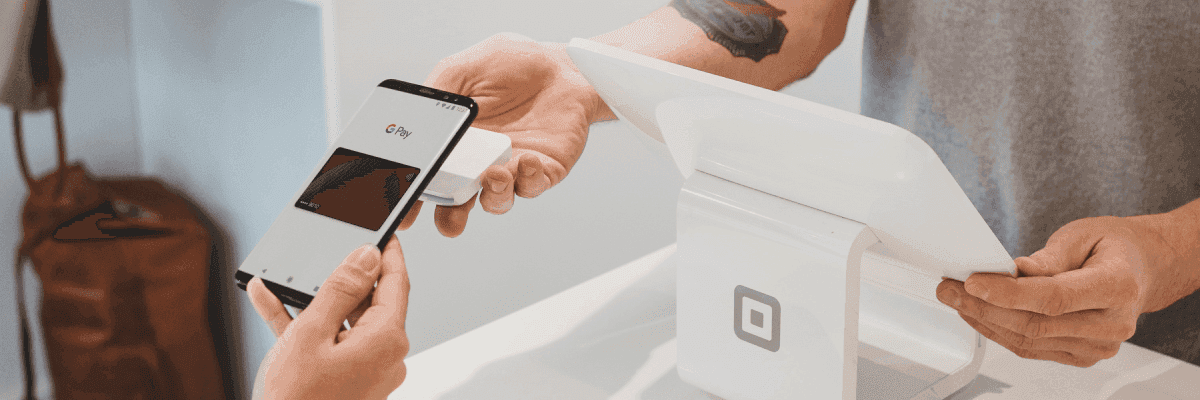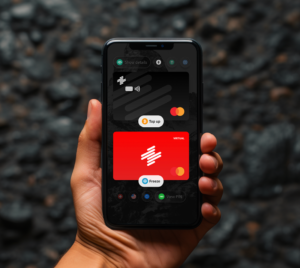It would probably be hard to imagine a payment method simpler and faster than hovering your NFC-enabled phone close to the reader.
But when you think about it… What is an NFC, actually? How do NFC payments work? And who can make and accept it?
It’s time to uncover the layers of the topic.
Near Field Communication (NFC) is a wireless technology that allows two devices to communicate when they are in close proximity to each other.
This payment technology enables convenient and secure transactions such as mobile payments.
NFC in mobile payments, such as Apple Pay, Google Pay, or Samsung Pay, is NFC technology that enables contactless transactions between NFC devices and NFC-enabled readers.
These payments are often referred to as “Tap to Pay” or “Tap” transactions and are a convenient and secure way to exchange data.
NFC mobile payment technology is becoming increasingly popular due to its encrypted nature, robust security measures, and ability to speed up the payment process.
How do NFC mobile payments work?

The secret of NFC technology is in a tiny chip. This is specific RFID radio frequency identification technology, which can identify objects using radio waves.
The waving happens when an NFC-enabled payment device with one of these NFC tags comes within about two inches of the NFC-enabled reader. At that moment, the microchips of two NFC-enabled devices exchange encrypted data, and credit card transactions take place.
The contactless payment processing is lightning-fast and creates a highly convenient checkout flow. It is one of the most secure payment methods.
Thus, due to their features, NFC payment options such as Apple Pay, Google Pay, and Samsung Pay are increasingly becoming the payment method of choice for consumers.
Simply put, NFC works just like a contactless credit card, but on your mobile device.
Benefits of NFC payments
There are three main reasons to choose NFC payments: convenience, speed, and security benefits.
Faster
The majority of people in the UK now use chip and PIN cards. Although they are more secure than magnetic stripe cards, chip cards can be slow during EMV transactions. Because the chip communicates with the processor to ensure reliability, it causes delays.
Meanwhile, NFC payments are instantaneous. According to Mastercard, mobile contactless payments are up to 10 times faster than other personal payments.
Businesses also benefit from the speed of NFC transactions. These payments are completed much faster, which often results in higher sales.
Convenient
With the increasing capabilities of smartphones, more and more of our tasks are done using our phones, and the payments industry is no exception.
NFC mobile payments have become the most convenient payment method. The availability and accessibility of mobile phones have meant that more and more people are choosing not to carry wallets or cash but to bring an NFC-enabled device close to the NFC reader for a moment and go.
In addition, NFC-enabled payment devices allow the acceptance of traditional card payments. Therefore, customers can choose the payment method that is more convenient for them.
Secure
When it comes to mobile NFC payments, payment service providers are required to follow PCI compliance standards and ensure a secure transaction environment.
Enabling customers to make payments using their mobile devices or wearable devices significantly reduces the risk of losing a physical wallet with multiple payment cards.
Mobile wallets such as Apple Pay further enhance security by converting bank details into symbols so they are not understood and can’t be used by fraudsters. In addition, these tokens change dynamically with each NFC transaction, making it extremely difficult to isolate and extract the data involved.
NFC payment security straightens fingerprint and facial recognition technologies built into devices like the iPhone. On these mobile devices, Apple Pay transactions are initiated using Touch ID and Face ID, which can’t be replicated.
NFC technology, therefore, plays an important role in reducing in-person card fraud and contributing to overall security.
Who can accept NFC mobile payments?

To accept NFC payments, you need a device with NFC technology. That can be NFC readers or mobile phones that completely replace them.
Almost all smartphones are NFC-enabled. Before accepting mobile NFC payments, you must download a payment app.
Customers can make a contactless payment by using mobile wallets and simply holding their phone close to a device, ready to accept contactless payments.
However, this is only the technical part. To accept contactless payments, the credit card or payment processing plan must also accept digital eWallet payments. The good news is that most merchant account providers do this.
Fees are also an important consideration. In most cases, the processing fees for contactless payments are the same as processing payments for regular card payments. The specific merchant account and plan determine the amount you will have to pay.
Types of devices that support NFC mobile payments
Accepting NFC mobile payments is no mean feat. You can do it with an NFC reader or other NFC-enabled device:
Smartphones
Most smartphones are equipped with NFC technology. To make or accept payments, all you need is an app.
Wearable devices
Some smartwatches also support NFC. There is only one limitation. The device must be configured with payment information via a mobile wallet.
Tablets
Some tablets can have NFC and work like smartphones.
Laptops
Laptops usually do not have NFC software installed. However, it is always possible to use external NFC hardware to make the computer work with NFC tags.
EMV chip credit and debit cards
Many EMV chip cards are issued by credit card networks. These cards can be used to make payments using an NFC device or reader.
NFC payments for businesses
NFC mobile payments technology is nothing new, though the retail industry took time to adapt to it. Fortunately, today the use of the NFC payment method is widespread and steadily rising.
When you think about mobile businesses like food trucks, street vendors, and flea market booth operators, today it is unusual to see them without a payment terminal with NFC enabled reader that accepts mobile wallet payments.
Accepting NFC mobile payments is not only convenient for the customer but also shows that the business is transparent. It helps create a professional and trustworthy image. As a result, when businesses accept NFC payments, it is convenient and secure for the customer and also provides additional benefits for businesses.
So, what business need to accept NFC mobile payments?
To start accepting NFC payments, you need only two things:
- an NFC-enabled countertop terminal or mobile swiper
- a credit card processor that can facilitate a contactless payment.
And they are not expensive either. The NFC reader accepts both EMV and NFC payments and is just £19. Or you can use a mobile payment app to accept NFC mobile payments using your smartphone.
The process of accepting NFC mobile payments works the same as with a typical credit card payment. After customers pay, the proceeds go directly into a business bank account.
FAQ
How do I pay using NFC?
If you want to start using NFC mobile payments, first, you need to add a mobile wallet app like Google Pay or Apple Pay to your mobile device.
Next, connect your mobile wallet to existing credit cards, debit cards, or bank accounts. Complete the setup. That’s all. Now you can make contactless payments at any retailer with an NFC terminal.
The NFC payment process is remarkably simple:
- Unlock your mobile device.
- Enable NFC payments.
- Tap your phone on the payment terminal
- The Apple Pay or any other app will open automatically.
- To confirm the payment, tap Proceed.
Is Apple Pay an NFC mobile payment?
Yes. Apple Pay is a version of NFC. Similarly, Google offers the digital wallet app ‘Google Wallet’ as its version.
However, at its core, it is the same idea. Both companies use NFC technology to create secure. and short-range communication between two devices. It is limited to a few feet and therefore is referred to as “near-field communication.”
Can I receive NFC payments on my phone?
Yes, most devices with NFC technology can accept mobile NFC payments from any contactless card or mobile wallet.
To accept contactless mobile payments on other devices, install a compatible payment app or service. These apps, such as Android Pay and Google Pay, are secure and allow you to accept payments from other users.
Then, when you want to accept contactless payment in-person transactions, the other person has to hold up their NFC-enabled device or contactless card near your phone.
The app that handles the process of payments transaction takes over. It securely processes the mobile payment and confirms the received money. Furthermore, you can always find payment information on the app.
Is contactless payment the same as NFC mobile payments?
In a way, contactless payments and NFC mobile payments are similar. However, they are not the same.
A contactless payment is a transaction that does not require physical contact between NFC devices. It means that people can hold up their mobile devices and pay.
NFC payments are one of the dominant types of contactless payments. However, contactless mobile payments can also be made in other ways, like by QR code.
Can I use NFC with Apple Pay?
In essence, they are the same. NFC is the industry standard for contactless payments. Apple Pay is a version of NFC that allows to pay in places that accept contactless payment.
Are NFC payments safe?
Yes, NFC mobile payment technology is stable and secure.
The same as EMV chip cards, any mobile wallet is more secure than magnetic strip cards. That is due to two factors. First, when using EMV chip cards or mobile wallets, encryption protects sensitive payment data.
Second, the device itself cannot be used without proper authentication. Though the phone is still physically vulnerable, the contactless pay activating passcode or biometric protection makes the mobile payment device almost useless to thieves.
What’s the difference between EMV and NFC?
EMV and NFC are distinct technologies serving different purposes.
Near Field Communication (NFC) is primarily concerned with mobile contactless payments. Users can make payments very quickly simply by holding their NFC-enabled devices over NFC readers.
EMV, on the other hand, is related to chip and PIN card payments. EMV uses encrypted chips embedded in payment cards to increase security and reduce the risk of fraud.
Read more


